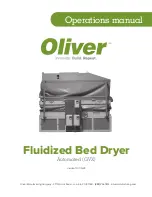
Garment care label symbols
Drying
q
/
r
Normal/low temperature
Drying is carried out at a low
temperature in every
programme, so you do not need
to sort your garments according
to whether they have the
q
or
r
symbol.
s
Do not tumble dry
Tips on drying
– Always observe the maximum
recommended loads given in the
"Programme chart". Never overload
the drum.
Overloading can cause
unnecessary wear and tear to the
laundry, give a disappointing drying
result and cause more creasing.
– Do not put soaking wet items into the
tumble dryer. Spin fabrics for at least
30 seconds before drying.
– Use the
Automatic plus
programme
for drying mixed loads of cotton and
minimum iron fabrics.
– Open jackets so that they can dry
evenly.
– Pure linen should only be machine
dried if specified as suitable by the
manufacturer on the garment care
label, as the surface of the fabric
may otherwise become rough.
– Loopknit garments (e.g. T-shirts and
underwear) tend to shrink depending
on their quality. Do not over-dry
these textiles. When purchasing
these garments it is advisable to take
their shrinkage properties into
account.
– Minimum iron fabrics tend to crease
more, the larger the load. This is also
the case for garments made from
very fine weave fabrics, such as
shirts or blouses.
Make sure you select a suitable
programme. If in doubt, divide the
garments into smaller loads and
select the
Gentle tumble
extra
option.
– Starched laundry can be dried in the
tumble dryer. To achieve the usual
finish, double the amount of starch
should be used.
– New dark coloured garments should
be washed and dried separately
from light coloured garments to avoid
the danger of colours running and
discolouring other garments or even
plastic components in the dryer.
Dark coloured fibres can also settle
on light coloured garments and vice
versa.
– Use the
Drying basket programme
for drying / airing items which are not
suitable for drying with mechanical
action. Important: You must use a
Miele drying basket (optional
accessory).
Notes on laundry care
24
















































